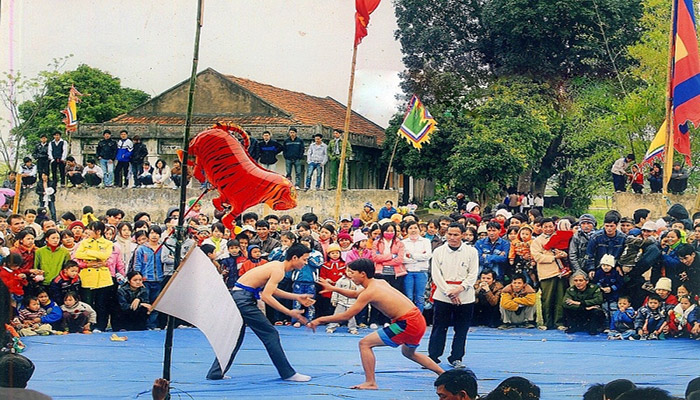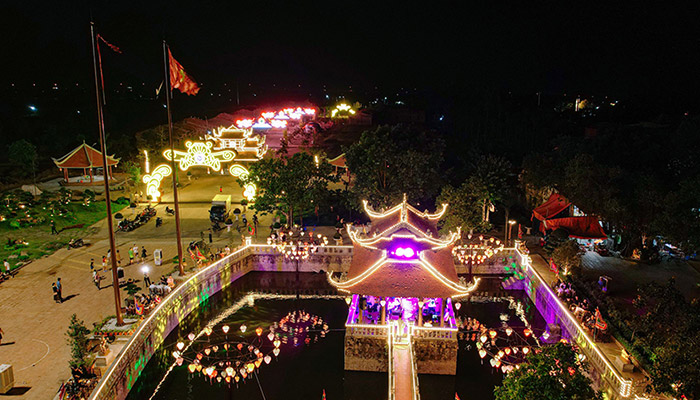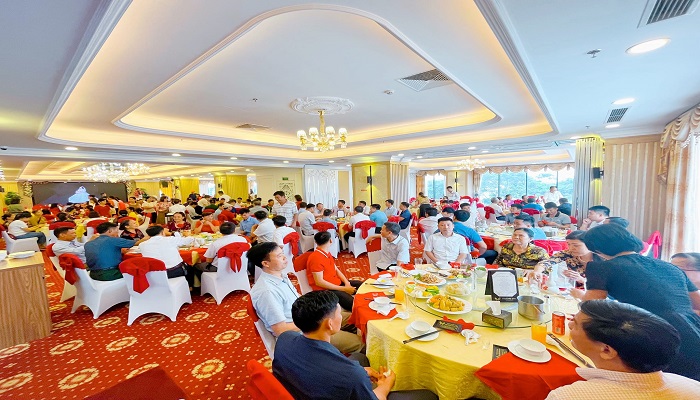Personality of Ha Nam People: Full of Vietnamese historical traditions
Ha Nam, a province in the Northern Delta, is a place where people have overcome all challenges and hardships on a harsh land with "chêm khe, rotten season". They created heroic feats in the war to conquer and build this land, while protecting and developing the Fatherland and homeland. Through historical events, the people of Ha Nam have formed good qualities, creating their own identity. Those precious traditional qualities include:
The spirit of patriotism and resistance to foreign invaders has gradually become a tradition and an indispensable element in the qualities of Ha Nam people. From the period of King Hung to the beginning of the new era, Ha Nam had many famous martial artists who participated in protecting the country and were honoured for centuries. Ha Nam is also the hometown of Le Hoan, the founder of the Early Le Dynasty, who led the army to fight the Song Dynasty to protect the country. In addition, during the resistance war against the Mongol army in the 13th century of the Tran Dynasty, Ha Nam was chosen as a prime location to place a large food warehouse, specifically Tran Thuong. During the resistance wars against the invaders, the people of Ha Nam always joined hands to contribute, from building food warehouses to directly participating in fierce battles. Their fighting and patriotic spirit was demonstrated through many historical events, such as the battle of A Lo and the battle of Amphibi. Also during these periods, patriotic traditions continued to spread and develop, especially under the leadership of the Communist Party of Vietnam, making an important contribution to the historic victory in 1945 and in the resistance war. fight America to save the country.
The spirit of patriotism and resistance to foreign invaders has gradually become a tradition and an indispensable element in the qualities of Ha Nam people. From the period of King Hung to the beginning of the new era, Ha Nam had many famous martial artists who participated in protecting the country and were honoured for centuries. Ha Nam is also the hometown of Le Hoan, the founder of the Early Le Dynasty, who led the army to fight the Song Dynasty to protect the country. In addition, during the resistance war against the Mongol army in the 13th century of the Tran Dynasty, Ha Nam was chosen as a prime location to place a large food warehouse, specifically Tran Thuong. During the resistance wars against the invaders, the people of Ha Nam always joined hands to contribute, from building food warehouses to directly participating in fierce battles. Their fighting and patriotic spirit was demonstrated through many historical events, such as the battle of A Lo and the battle of Amphibi. Also during these periods, patriotic traditions continued to spread and develop, especially under the leadership of the Communist Party of Vietnam, making an important contribution to the historic victory in 1945 and in the resistance war. fight America to save the country.

Martial spirit is an outstanding characteristic of the Ha Nam people, this has been shown through their victories against foreign invaders and is passed down through hundreds of stories and hundreds of martial proverbs. Festivals such as the Lieu Doi martial arts wrestling festival, the Trinh Khiem festival in Co village and Dung village (Liem Son commune, Thanh Liem), along with the Co Long martial arts festival in Co Dong village, Thanh Hai, Thanh Liem, are all evidence of the the richness and diversity of martial arts culture in Ha Nam. Places such as the Fuzhou wrestling furnace (Ly Nhan), An Bai (Binh Luc), and the Lieu Doi martial arts wrestling festival are all sources of pride closely related to the history and spirit of the Henan people. Their treasure of folk military theory is an invaluable asset, a combination of experience from hundreds of wars to protect the Fatherland. These arguments are not only the pride of a fighting army, but also of strategists who grasp the essence of war. This knowledge is still valuable and used in the present era.
In addition, the characteristics of Ha Nam people are people with a deep humanistic spirit and a romantic soul. They are willing to sacrifice to protect their homeland, so they are also compassionate and desire peace. Lieu Doi traditional culture not only teaches generals how to lead troops to fight the enemy, but also contains profound advice on how to end wars and build peace. The development history of Ha Nam is the story of the sweat and sacrifice of thousands of generations of people. They are always willing to sacrifice for the love of their homeland, the desire for happiness and faith in the future, and at the same time have a romantic spirit.

In a vast low-lying environment, with flooded fields all year round, Ha Nam people constantly work, sacrificing "living with their skin, dying with their bones", turning low-lying lands into fertile fields, harvesting twice a year. crop. They showed resilience in clinging to the land, to the village, and appreciating farming, a spirit that has been recognized from Le Hoan's time to the present day. In addition, Ha Nam is also famous for livestock products and traditional handicrafts such as carpentry, mother-of-pearl inlay, drum making, stone carving, embroidery... Although natural conditions are not very favourable, but With determination and ingenuity, Ha Nam people still produce many famous products such as Dam beans, Tai vermicelli, Dam Rach fish, Nha Xa silk, Lang Sai crab salad... Today, in the context of transitioning to modern agriculture, Ha Nam people still maintain and develop the tradition of focusing on agriculture, and actively integrate into the market economy.
Although Ha Nam is a poor land, the people here always value education and love learning. This region has given birth to many literary talents, with 53 people passing 36 exams since feudal times. Scholars such as Ly Tran Than, Truong Cong Giai and writers and poets such as Tran Thuan Du and Duong Bang Bang have greatly contributed to the country's development.
The satirical poetry line, with works by Nguyen Khuyen and Kep Tra, is a symbol of the tradition of studiousness and clear intelligence of the Ha Nam people. The Communist Party of Vietnam has continued to honor this legacy. Names such as Pham Tat Dac with his poetry collection "Chieu Hon Nuoc", Nguyen Thuong Cat with his translation of "Capitalism", and martyr writer Nam Cao have left a deep mark in national literature.

In addition, Ha Nam is also proud of the "Bac Ly drum" and the flagship of the Two Good emulation movement "teach well, learn well", demonstrating their commitment to education. Up to now, Ha Nam still maintains its leading position in the field of education.
The people of Ha Nam are not only hard workers but also possessors of rich cultural treasures of all types, from literature, poetry, music to festivals, including folk culture. traditional and modern. With many festivals taking place throughout Ha Nam, such as singing festivals and traditional festivals, the combination of religious beliefs and folk music has created a unique space, reflecting diverse aspects of life. live the spirit of the people here. Festivals such as Doi Pagoda Festival and Lanh Giang Festival in Duy Tien; Tran Thuong Temple festival in Ly Nhan; The bridge robbery festival in Lau Chay, the Cong Dong communal house... have contributed to the cultural diversity and rich tourism potential of this land.

Ha Nam is also famous for hundreds of legends about famous people of all times, expressed through hundreds of temples, shrines, altars, and stone stele. The land of Ha Nam has given birth to many outstanding characters, including writers such as Nam Cao, Bui Di, Nguyen Khuyen,... and literary works such as "Nam Xuong Daughter" by Nguyen Du, or others. Literary characters such as Giao Thu, Lao Hac, Chi Pheo, Thi No,... of Nam Cao have become cultural symbols of Vietnam.
The tradition of honouring and worshipping those who have contributed to the people and the country, along with worshipping heroes who built and defended the country, is an expression of gratitude and responsibility to the community. Confucian scholars, writers, and poets of Ha Nam are always respected and respected, and ancestral worship is also an indispensable part of this local culture.
Ha Nam is also one of the localities famous for the mixture of indigenous beliefs and Buddhism from outside. Buddhist temples and Catholic churches in Ha Nam are not only places of worship but also cultural and architectural symbols of the community. The diversity and harmony of these religions shows the religious freedom and respect for the religious values of the people of Ha Nam.
The historical cultural heritage and rich cultural traditions of the Ha Nam people are not only a source of pride but also a source of inspiration and motivation to build and protect the homeland, while contributing to the development civilization and wealth of the country.

.jpg)








